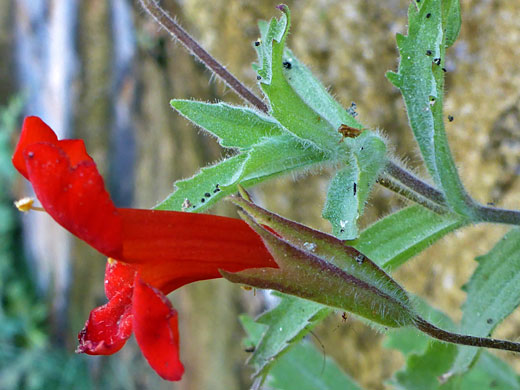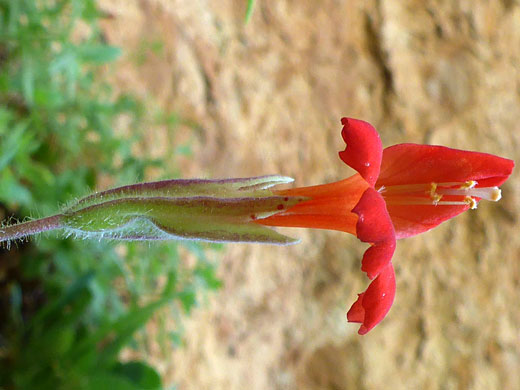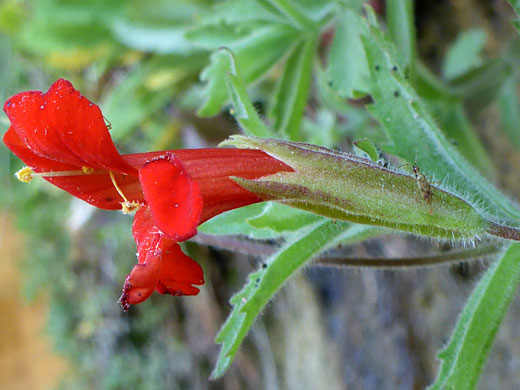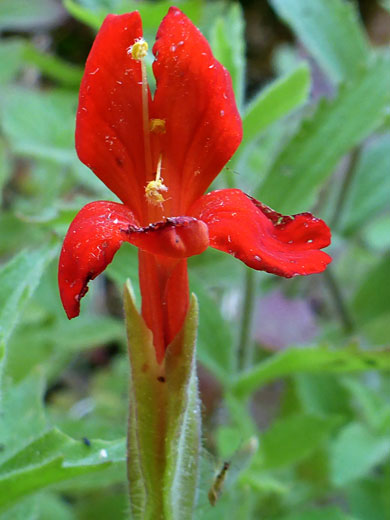Erythranthe Eastwoodiae, Crimson Monkeyflower
Plants > Wildflowers > Phrymaceae > Erythranthe Eastwoodiae
Common name:
Crimson monkeyflower
Family:
Scientific name:
Erythranthe eastwoodiae
Synonym:
Mimulus eastwoodiae
Main flower color:
Range:
The Four Corners states
Height:
Up to 16 inches
Habitat:
Seeps, springs, moist alcoves, from 4,000 to 7,000 feet
Leaves:
Opposite, sessile, unlobed, toothed, hairy, broadly lanceolate; up to 2.8 inches long
Season:
May to October
Erythranthe eastwoodiae, an uncommon species, is endemic to the Colorado Plateau, mostly in northern Arizona and southern Utah, growing in seeps and hanging gardens, often along canyons. Stems, leaves and calyces have a covering of spreading hairs. Leaves are relatively broad, lined by large teeth, mostly above the middle, and crossed by three or five palmate veins. The largest leaves are towards the top of the stem. Stems are spindly, usually climbing, prostrate or pendulous, hanging down from sloping rock faces.
The corolla is all red, with a slightly recurved upper lip, divided into two lobes, and a more strongly recurved lower lip, more deeply divided into three lobes. The four stamens have reddish filaments and hairy, greenish-yellow anthers. The ridged green calyx is lined by five pointed teeth, approximately equal in size. Flowers are up to 1.8 inches long.
The corolla is all red, with a slightly recurved upper lip, divided into two lobes, and a more strongly recurved lower lip, more deeply divided into three lobes. The four stamens have reddish filaments and hairy, greenish-yellow anthers. The ridged green calyx is lined by five pointed teeth, approximately equal in size. Flowers are up to 1.8 inches long.
All Contents © Copyright The American Southwest | Comments and Questions | Contribute | Site Map







